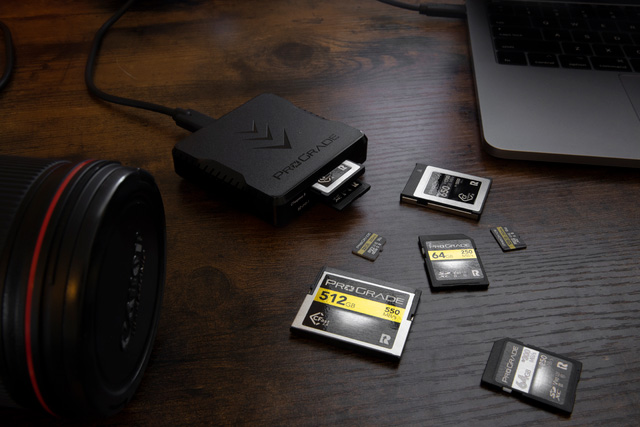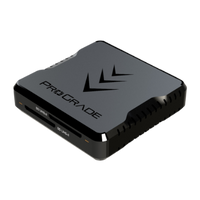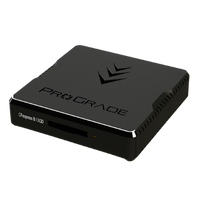Do I really need a card reader?
You’ve completed the shoot, you have the images, now it’s time to transfer them to your computer. Do you sit down and whip out the USB cable? If the answer is yes, then definitely read further!
In the good ol’ early days of digital photography, a USB cable was the only way to transfer raw images from a camera to a computer. But transferring images from your camera to your computer can often be painfully slow, making you lose valuable time that you can otherwise be using to shoot even more photos! In the era of reusable memory cards, most professional photographers have already made the switch to card readers.
Our card readers allow you to quickly and reliably transfer images from your camera to your hard drive. We think they will certainly become your new best friend. Still not convinced? Let’s talk about the benefits of ProGrade card readers for photographers.
Reliability and durability
Not all card readers are made the same. Many card readers come with cheap, hollow plastic casting which keeps the price low, but might break down when you least expect it. In comparison, ProGrade card readers are designed for sturdiness and durability which can make a world of a difference if your card reader tends to travel around with you–and let’s admit it, it’s usually at the bottom of your laptop or camera bag.
Battery life is another thing professional photographers should consider when choosing a card reader. If you’re still using a USB connection to transfer files, the battery dying during the transfer could lead to corrupted or even lost data. A sturdy, high quality card reader means you don’t need to worry about power consumption and, of course, the better and more durable the card reader, the more reliable your image transfer will be.
Speed
With ProGrade card readers, you can transfer images and videos much faster than with some of the older, slower readers on the market. The lower-end card readers usually come with a speed of transfer around 160MB/s, with USB 2.0 AND USB 3.0 offering transfer speeds as high as 480 MB/s and 5Gbps, respectively. In comparison, ProGrade 3.2 Gen 2 card reader has a speed of 10Gb/s, and the Thunderbird 3 reader can transfer data with up to 40Gb/s. In real life, these speeds might vary depending on your machine. However, to put things into perspective, if you’re using a USB 2.0, you’ll need around 3.5 hours to transfer 64GBs of raw images: with ProGrade Thunderbolt 3, which offers an even faster connection with real-life image transfer clocking in at 846MBs/693MBs read/write. With the USB 3.2 Gen 2 reader from ProGrade Digital, it will take a mere 6 min.
In a nutshell, with ProGrade card readers, you get significantly faster performance and read speed, which can dramatically shorten the image acquisition period and can be a lifesaver when dealing with large raw files.
The biggest advantage of a card reader, though? You can use your camera during the transfer. Using a USB cable to move your images from your camera naturally means you’re tied up with it, but with a card reader, you simply load your memory card, pop a new one in your camera and you’re ready to keep shooting. This is a significant advantage for professional photographers juggling multiple projects or shooting events such as weddings.
With its reliability, speed of transfer and convenience, a card reader can save you a lot of time and headaches which is why it’s become a must-have for the tool kit of the modern photographer.





